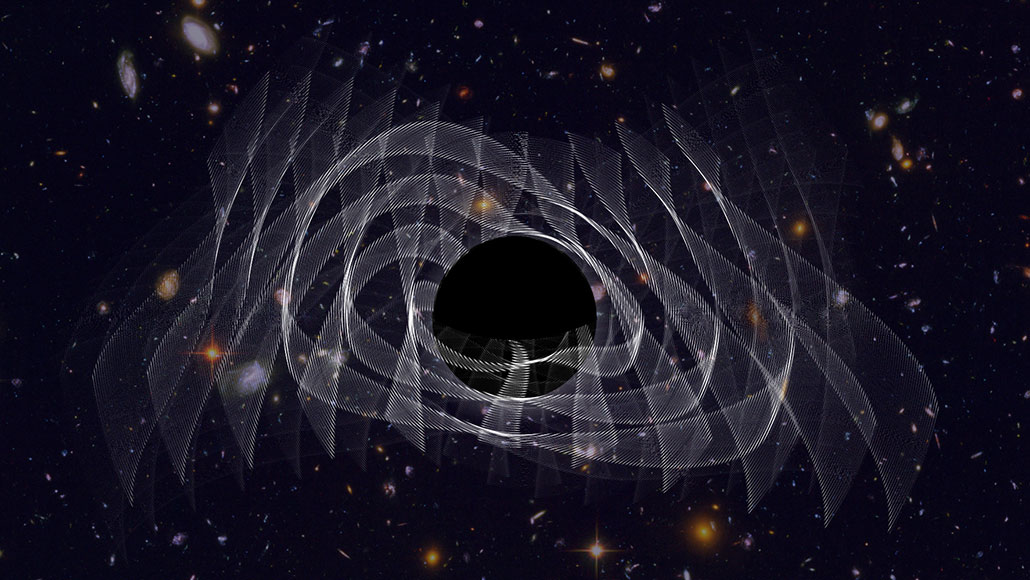
After two black holes collide and meld into one, the new black hole “rings” (illustrated), emitting gravitational waves before settling down into a quiet state.
M. Isi/MIT, NASA

After two black holes collide and meld into one, the new black hole “rings” (illustrated), emitting gravitational waves before settling down into a quiet state.
M. Isi/MIT, NASA